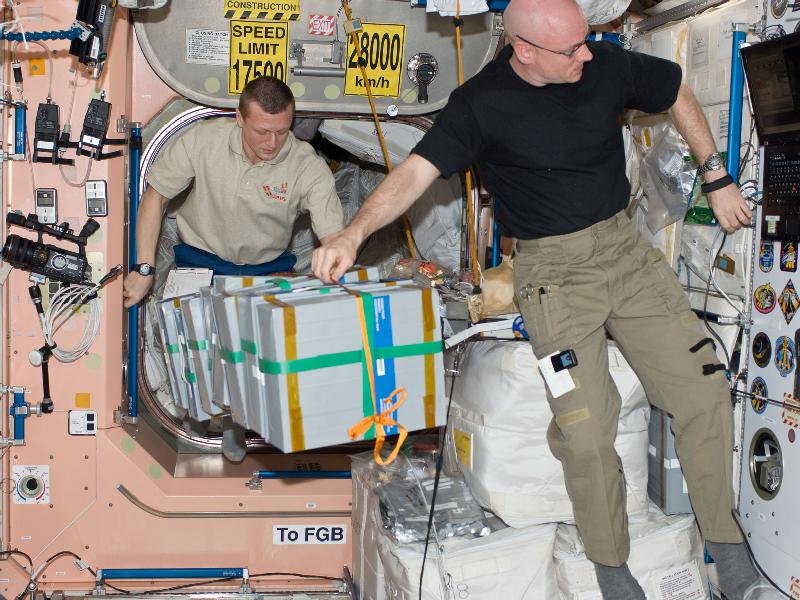RFID: It's Not Rocket Science- Or is it?
 Taking inventory of food in your home is fairly simple: open the refrigerator. Low on milk? Hop in the car and run to the store. Well, what if a trip to the store cost $450 million—the average cost of a space shuttle mission? On the International Space Station (ISS) accurate inventory is paramount. For example, when the investigation into the explosion of Space Shuttle Colombia in 2004 postponed space missions, the astronauts aboard the ISS were instructed to reduce their calorie intake by 300 calories per day.
Taking inventory of food in your home is fairly simple: open the refrigerator. Low on milk? Hop in the car and run to the store. Well, what if a trip to the store cost $450 million—the average cost of a space shuttle mission? On the International Space Station (ISS) accurate inventory is paramount. For example, when the investigation into the explosion of Space Shuttle Colombia in 2004 postponed space missions, the astronauts aboard the ISS were instructed to reduce their calorie intake by 300 calories per day.
Following this event, NASA needed to re-evaluate inventory control policies so that future astronauts would not be forced to eat less when inventory is not available.
The astronauts aboard the ISS depend on launches for survival, however, each space launch costs approximately $450 million. Because of this high cost, de-manning due to food shortages would strain NASA’s budget, to say the least. This is no different from warehouses and retail stores. Shortages of inventory can result in lost sales and too much inventory can cause more supply than demand. Currently, there are six astronauts aboard the ISS. Tracking their clothing, hygiene items, office supplies, medical supplies and food is critical to both their survival and the success of the mission.
The solution? RFID
NASA now uses RFID for space flight inventory aboard the ISS. After extensive comparative testing of the major brands of RFID handheld readers on the market today, Johnson Space Center purchased ACC570 handheld RFID readers and associated peripherals from A.C.C. Systems Inc. RFID is used to track myriad inventory items aboard the ISS, some are tagged at the bulk bag level, others are tagged at the item level.
The RFID readers and peripherals provided by A.C.C. Systems are qualified to support program requirements; shielded such that they passed radiation testing and can accept a total dose of radiation exposure of 600 RAD (with 200 MeV protons) and zero-gravity (Zero-G) testing. They are also certified for an on-orbit lifetime of 10 years for International Space Station utilization as Next Generation RFID and Barcode Readers.
According to sources at NASA, A.C.C Systems, Inc. is the only company capable of meeting the NASA requirements, being able to produce the RFID Readers and other peripherals necessary for this project.
When tracking accuracy is critical, RFID technology is the solution.
If you liked this article, also try:
The Point of Sale News, an online magazine dedicated to the retail industry.
![]() Subscribe to The BarCodeNews Enewsletter
Subscribe to The BarCodeNews Enewsletter

